Every day, thousands of people tell a taxi driver “Vatican, please”, and end up at the wrong gate. Then have to push their way through a kilometer of sweaty humans to reach the correct gate. All while hoping they didn’t miss their time slot to the Vatican Museums or St. Peter’s Basilica. There’s a way to avoid this mess and actually have an enjoyable, crowd-free visit. Want in? Here’s how to visit the Vatican the right way.
Pro Tip: This article focuses on the Vatican Museums. For information on St. Peter’s Basilica, check out our article How to Visit St Peter’s Basilica: Tickets, Tours & Tips.
Visiting the Vatican Museums
With 54 galleries and 70,000 masterpieces packed into less than a square mile, the Vatican Museums are one of the most influential and visited art institutions in the world. This is where you’ll find the Laocoön, the School of Athens, and ceilings painted by Michelangelo. Each piece chosen not just for beauty, but for legacy.
Let’s jump into the most important things you need to know about visiting the Vatican Museums.
How To Get To the Vatican Museums & St. Peter’s Basilica

The Vatican Museums and St. Peter’s Basilica have different entrances. The entrance to the Vatican Museums is on Viale Vaticano, along the northern wall of Vatican City. The entrance to St. Peter’s Basilica is in St. Peter’s Square.
The best way to reach either is by taxi, just be sure to tell your driver whether you want St. Peter’s Basilica or the Vatican Museums.
Other options include:
- Metro (Line A): Ride toward Battistini and hop off at Ottaviano or Cipro. From either, it’s a 5-minute walk to the Vatican Museums or a 10-15 minute walk to St. Peter’s Square.
- Walking: Easy from Piazza Navona, Castel Sant’Angelo, or Campo de’ Fiori, but remember you’ll still be on your feet for three more hours inside.
Interessante Fact: Vatican City only became an independent state in 1929 with the Lateran Treaty, negotiated between Pope Pius XI and Mussolini’s government.
Vatican Museums Tickets & Hours
If you’re not going guided, this is your road map—all laid out nicely so you can budget and schedule accordingly. You can also find ticket information for St. Peter’s Basilica in our article, How to Visit St Peter’s Basilica: Tickets, Tours & Tips.
Vatican Museums Ticket Prices:
- Adult (18+): €20
- Children (ages 7 – 18): €8
- Students (ages 18 – 25): €8
- Members of the clergy: €8
- There is a €5 reservation fee if you pre-book tickets on the Vatican website.
The Vatican Museums Hours:
- Monday to Saturday: 8 am to 8 pm (last entry at 6 pm).
- Dec 24th and 31st: 8 am to 3 pm (Last entry at 1 pm).
- Closed: Sundays except for the last Sunday of every month, Jan 1st and 6th, Feb 11th, Mar 19th, Apr 21st, May 1st, June 29th, Aug 15th and 16th, Nov 1st, Dec 8th, 25th and 26th.
- Free the last Sunday of every month: 9 am – 2 pm (last entry 12:30 pm). Not recommended if you don’t like crowds.
👉 No tickets left on the official Vatican Museums website? We reserve a limited number of Vatican Museums tickets ahead of time just for this reason.
Best Guided Tours of the Vatican
Scroll through all Vatican Museums tours, or find yours by price and duration below.
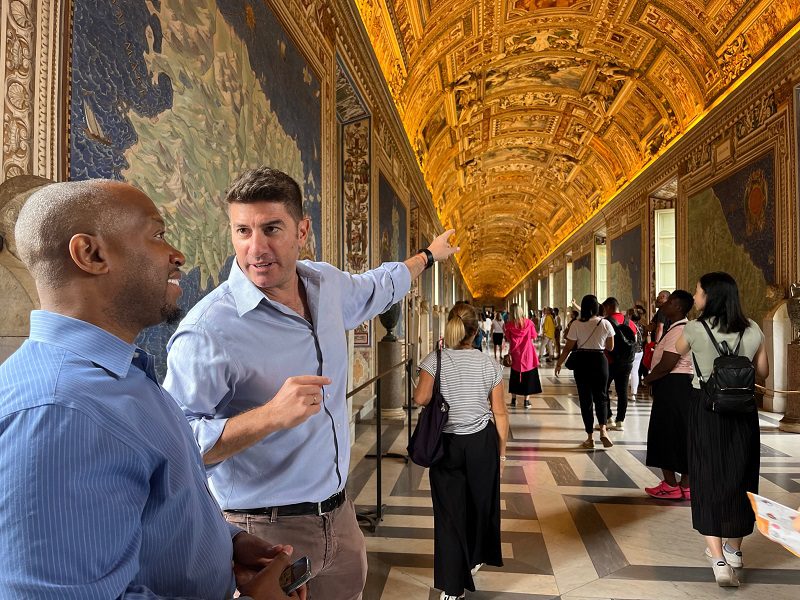
Privileged Entrance Vatican Tour with Sistine Chapel & St. Peter’s Basilica
3 Hours | €€€
Skip the line and gain direct access to the Raphael Rooms, Creation of Man & Scala Regia passageway.
Book Now!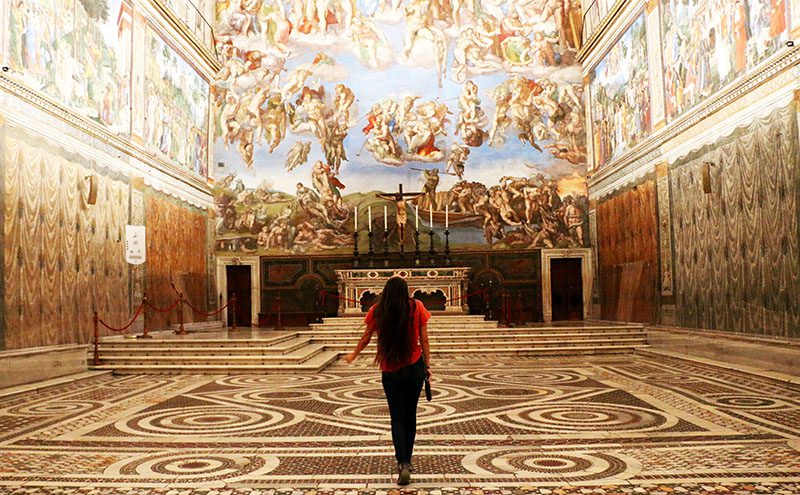
Exclusive Sistine Chapel After Hours Small Group Tour
2 Hours | €€€€
Step inside the Vatican Museums after they close to the public for a once-in-a-lifetime experience.
Book Now!
Rome in a Day Tour with Colosseum and Vatican Museums
7 Hours | €€€
Enter the Sistine Chapel, Roman Forum, and see St. Peter’s Dome, Pantheon, Trevi Fountain, and more.
Book Now!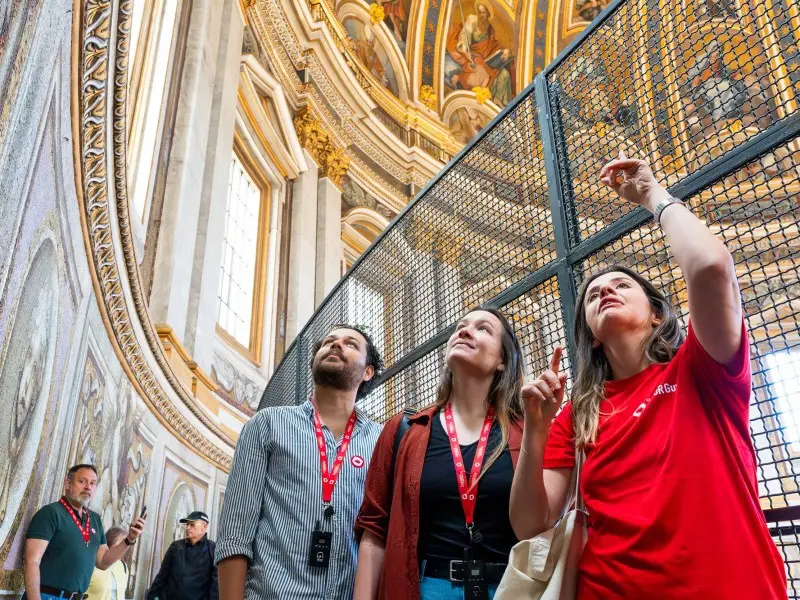
St. Peter’s Dome Climb and Sistine Chapel Combo Tour
5 Hours | €€€
See Rome from above then go deeper into the Vatican’s highlights and Michelangelo’s masterpieces.
Book Now!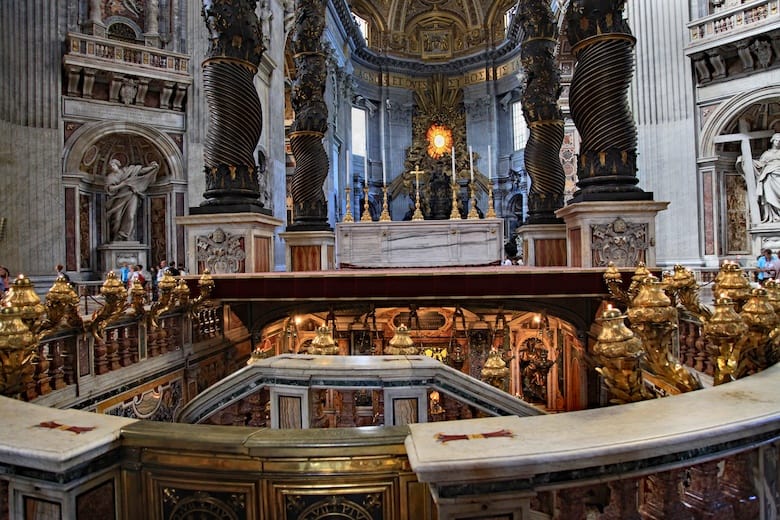
St. Peter’s Basilica Express Tour with Papal Crypts
1 Hour | €
Marvel at Michelangelo’s Pietà, Bernini’s Masterpieces, and Sacred Tombs in St. Peter’s.
Book Now!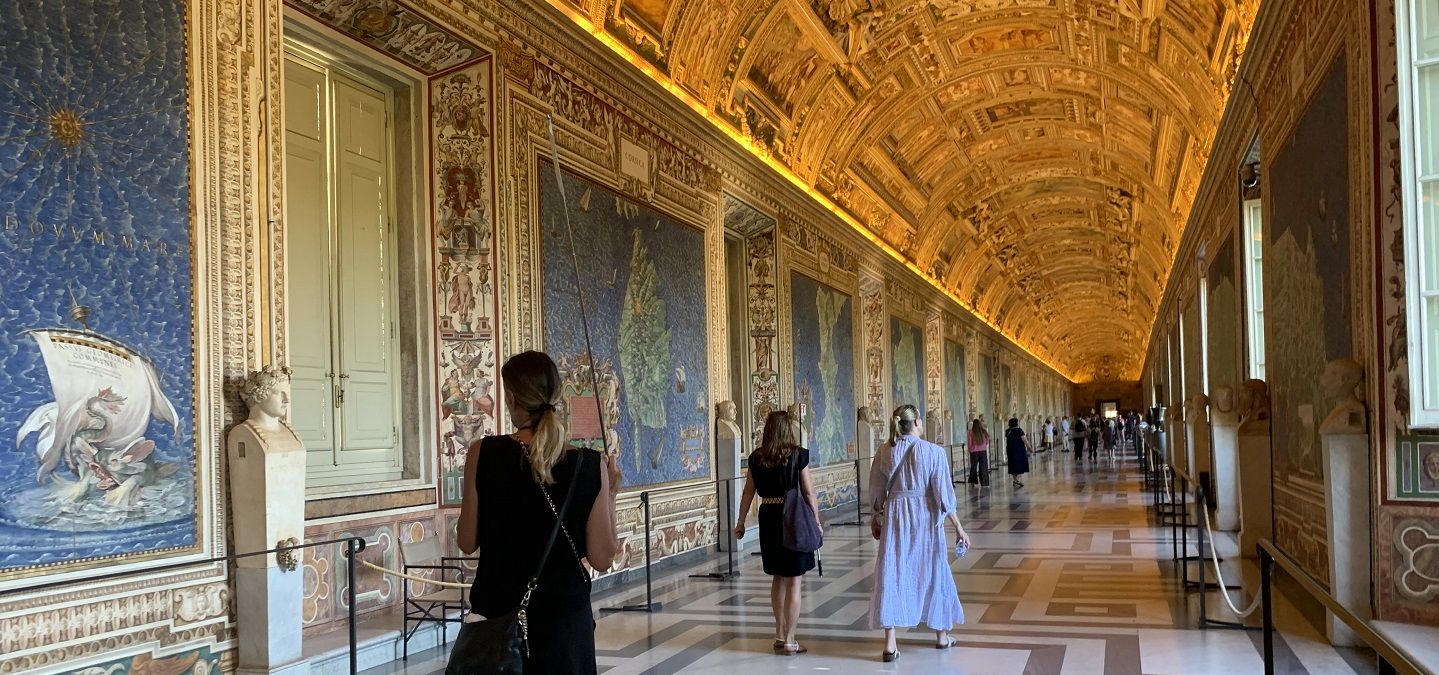
Private Skip the Line Vatican, Sistine Chapel, and St Peter’s Basilica Tour
3 Hours | €€€€
Enjoy a tailored VIP Vatican Museums and St. Peter’s Basilica experience with a dedicated private guide.
Book Now!Visitor Tips for the Vatican Museums & Mistakes to Avoid
To make the most of your visit, follow these tips.
- Respect the strict dress code: no bare shoulders or shorts above the knee.
- Wear comfortable shoes—you’ll end up walking a few miles in total.
- Photography and loud talking are banned in the Sistine Chapel.
- You cannot re-enter the Vatican Museums once you exit, so take your time inside.
- Consider an after-hours tour for the best experience.
Secret Tip
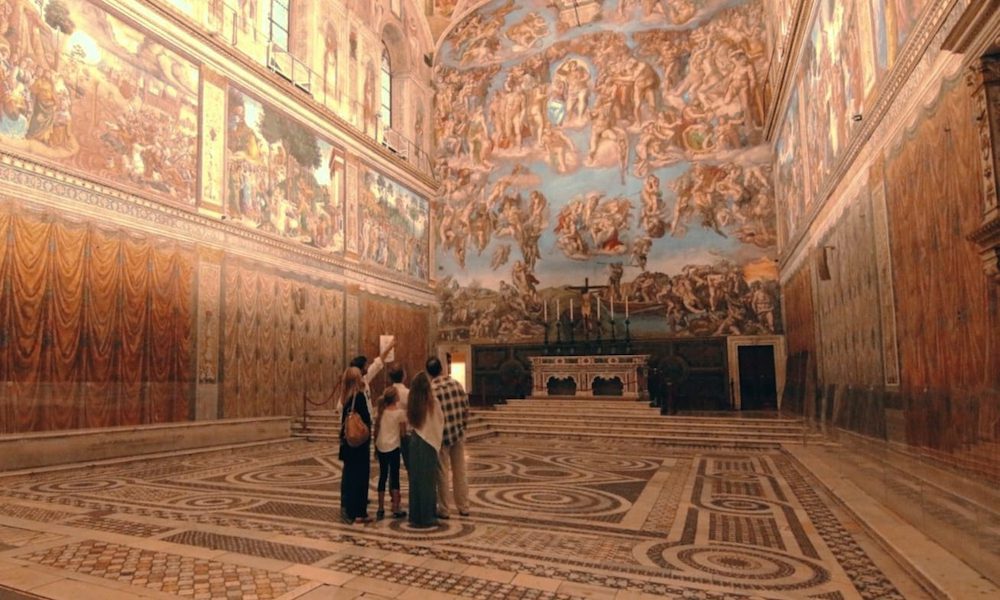
Want to see the Sistine Chapel alone, in silence, after closing? Limited Exclusive Sistine Chapel After‑Hours Small‑Group Tours run on select 2025 Jubilee dates:
Fri 26 Sep • Mon 29 Sep • Fri 3 Oct • Fri 10 Oct
Only a handful of people ever stand beneath Michelangelo’s ceiling without the crush of tourists—be one of them.
Top Hotels in Rome
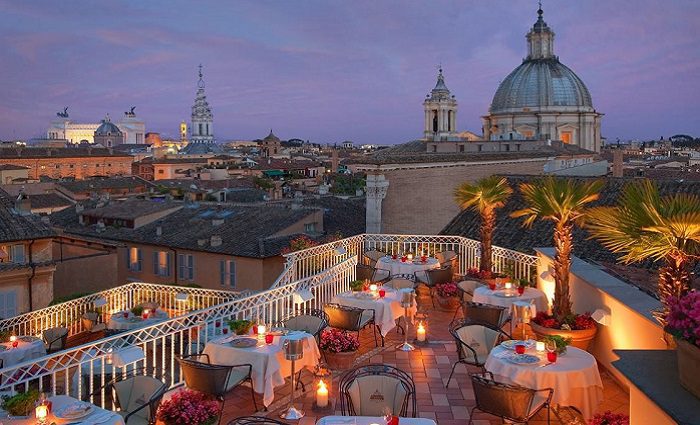
Bio Hotel Raphael ⭐⭐⭐⭐⭐
Piazza Navona • Terrace
Luxury hotel with a rooftop restaurant plus spacious and calming suites near Piazza Navona.
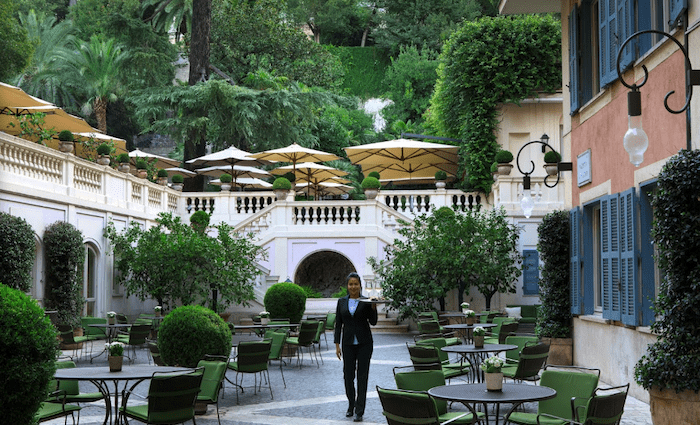
Hotel de Russie ⭐⭐⭐⭐⭐
Timeless Luxury • Spanish Steps
Popular hotel for VIPs like Bruce Springsteen with a classic Italian style and a dreamy courtyard.
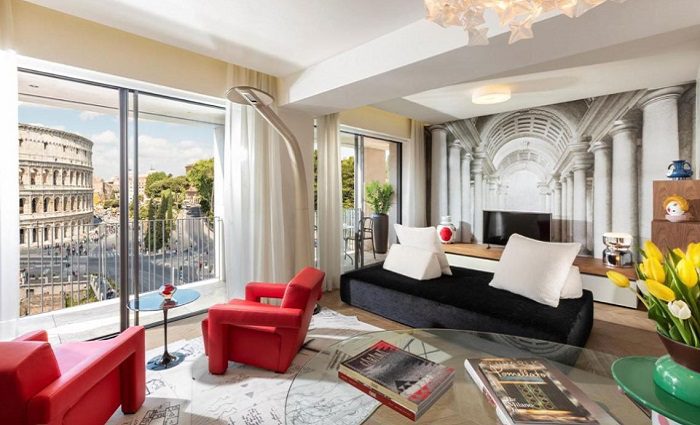
Palazzo Manfredi ⭐⭐⭐⭐⭐
Luxury • Near Colosseum • Terrace
Wake up to views of the Colosseum and enjoy meals on a stunning terrace in this top hotel in Monti.
How Long Does a Vatican Museums Tour Take?
A guided tour through the Vatican Museums, including the Pinecone Courtyard, Auditorium, Raphael Rooms, and Sistine Chapel, lasts around 3 hours. If you’re going self-guided, budget at least 2 hours, plus extra for security and walking between galleries.
👉 Want to pair the Vatican Museums with St. Peter’s Basilica? Choose a tour that includes the Scala Regia (direct access into the basilica). Otherwise, you’ll have to exit the Vatican Museums and walk 20 minutes to stand in another line.
What to See Inside the Vatican Museums
Follow the signs to the Sistine Chapel, but don’t miss these stops on the way:
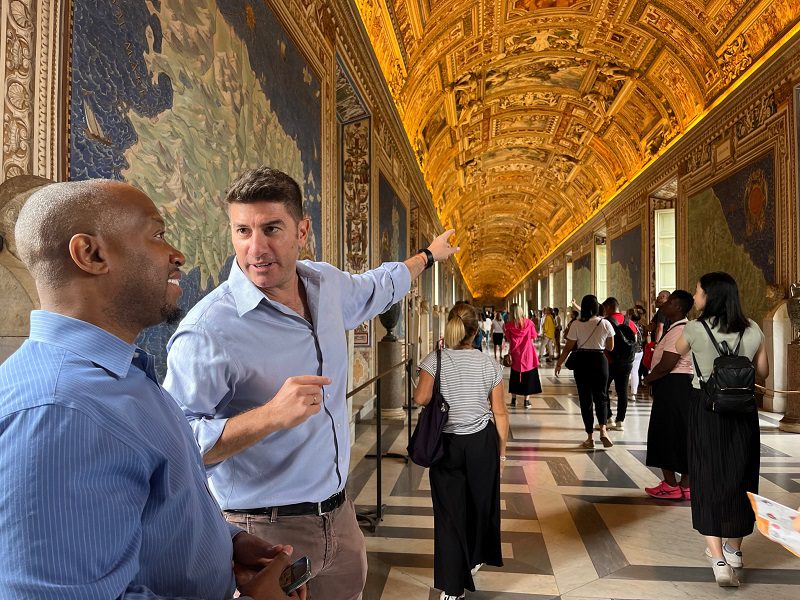
👀 Click on the name of the stop for a detailed explanation!
- Pinecone Courtyard
- Pio Clementino Gallery — Laocoön Group & Apollo Belvedere
- Gallery of Candelabra, Tapestries, & Maps
- Raphael Rooms — The School of Athens
- St. Peter’s Basilica — La Pietà & Il Baldacchino
- Spiral Staircase exit by Giuseppe Momo (1932)
Where to Eat Inside & Nearby
Hunger and bad coffee kill art appreciation—here’s where to refuel:

Inside the Walls
- Caffetteria Centrale — convenient, cafeteria‑style.
- Bar near the Sistine Chapel — quick espresso & pastry.
- St. Peter’s Dome Bar — yes, you can sip a coffee on top of the dome when it’s open.
Steps Away
- Hostaria Dino e Toni — authentic Roman pizza & pasta, still local‑run.
- 200 Gradi — legendary sandwiches, perfect grab‑and‑go.
- La Zanzara — trendy bistro for cocktails and a sit‑down lunch.
Interessante Fact: The Vatican Museums aren’t just galleries—priests, scholars, and even a few nuns actually live inside the palace complex.
Attractions Near the Vatican Museums
These are all within walking distance of the Vatican Museums and make a great addition to your Rome itinerary.
- St. Peter’s Basilica: The spiritual center of Catholicism is right next door. Entry is free, but lines can be long without a tour.
- Castel Sant’Angelo: A 15‑minute walk for breathtaking views over the Tiber.
- Via Cola di Rienzo: A chic shopping street just outside Vatican walls.
👉 For more ideas, check out our article on the Top Things to Do in Rome.
Frequently Asked Questions About the Vatican Museums
Plan a minimum of 2 hours inside the Vatican Museums for a self-guided visit, or 2.5 – 3 hours if you’re on a guided tour that covers the Pinecone Courtyard, Gallery of Maps, Raphael Rooms, and the Sistine Chapel.
No, there is no stand-alone Sistine Chapel ticket. Your Vatican Museums ticket includes entry to the Sistine Chapel.
The quietest entry slots are 8:00 am opening time, late-afternoon after 4:00 pm, or exclusive after-hours openings on select evenings.
The Vatican Museums are closed every Sunday except the last Sunday of each month, when entry is free from 9 am to 2 pm (last entry 12:30 pm).
Both require covered shoulders and knees for all visitors. Sleeveless tops, short shorts, and hats are not permitted.
Children aged 6 and under enter free but still require a time reservation online. Ages 7–18 qualify for a reduced €8 ticket.
Yes. Elevators and step-free routes are available, and staff can guide wheelchair users along an accessible itinerary to the Sistine Chapel.
During peak season (April–October and major holidays), secure Vatican Museums tickets at least 30 days in advance.
Yes, from time to time, we offer promo codes for the Vatican on our dedicated promo codes and discounts page.
Final Thoughts
Book ahead, respect the rules, and wear comfortable shoes. A small‑group tour gives you skip‑the‑line entry, expert introductions, and insider shortcuts like Scala Regia into St. Peter’s. Afterward, unwind with a caffe at the Dome Bar or a wood‑oven pizza nearby.
Eager for more? Check out these travel planning resources:
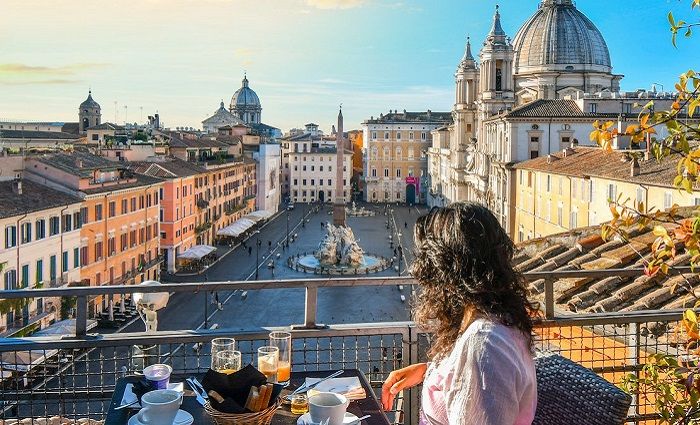
Where To Stay in Rome
Rome has a rich cultural history and many iconic landmarks to explore. Plan where to stay in the magnificent Eternal City in the best neighborhoods.

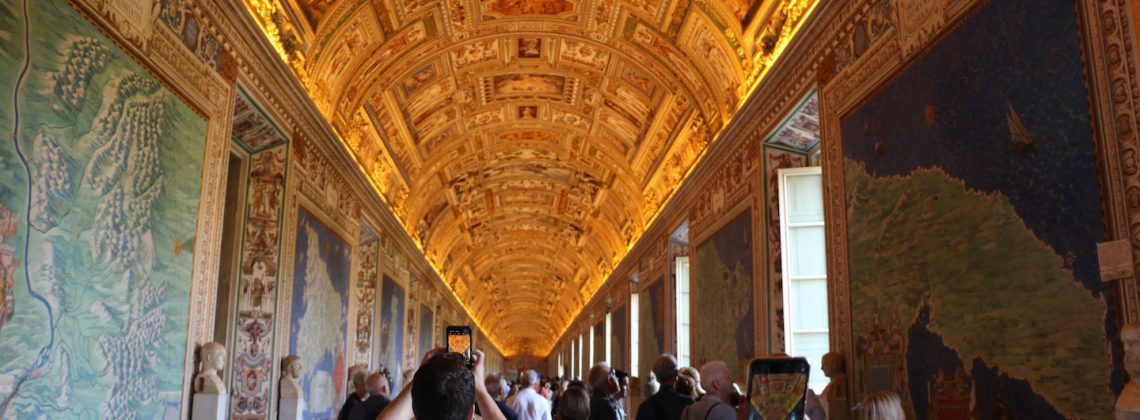
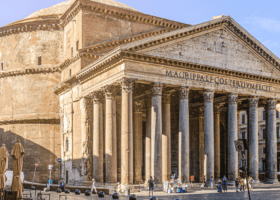
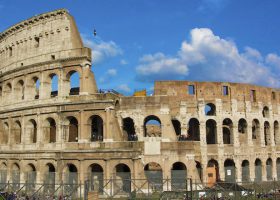
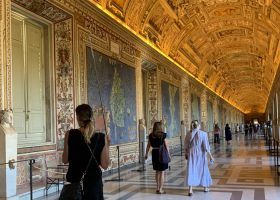
It’s best to visit this enthralling withing the country charm
Hey Eric! Thanks for reading our blog. We’re so glad you enjoyed reading!
It was great reading your blog, very nicely executed. You obviously put a lot of effort into it. Keep it up!
Grazie! We’re so glad to hear that you enjoy the blog. Come to Rome soon and join us on tour!
I, being a native of Italy, wasn’t aware of these facts and the way it has been stated is interesting as well as hugely informative. Thanks for the post man… Would be waiting in for more.
Ciao Daniel! We’re thrilled to hear that you enjoyed reading this post. We offer tons of useful content on travel in Italy! Check out another one of our useful Vatican blogs here, about our best Vatican tours.
Thank you for this informative post! With regards to your Vatican tours, which tour will be the one to get the most out of Vatican City?
Solo traveler by the way. Looking forward to hearing from you soon!
Ciao Darryl! Thanks for checking out our blog. For the most in-depth Vatican City experience, I recommend our Complete Vatican Combo Tour with Sistine Chapel & Dome Climb. This climbs St. Peter’s Dome and provides an excellent skip the line Vatican tour. Hope this helps!
Thank your these tips Tawny. Very helpful and detailed. I will definitely look up in your travel guide and tours next time I come in Rome.
Ciao Sophia! Thanks for reading our blog! Happy to supply helpful information to you. We’d love to welcome you on tour when you come to Rome!
Hello, We have planned a day visit to Rome on 25th Dec. Please suggest if all attractions will be open that day especially the St. Peter’s basilica and the Vatican museum.
Ciao Anu! The Vatican Museums are closed on Christmas. We recommend visiting the Vatican a different day during your stay.
Hello!
It was great reading your blog, very nicely executed. You obviously put a lot of effort into it. Keep it up!
Thanks
My daughter and I are going to our first trip to the Vatican this summer. I wanted to find out if there is a mandatory dress code when visiting. In our country, for example, women in trousers and bare-headed cannot go to Orthodox churches. Thanks for such detailed details.
Hi Tori! Thanks for reading. Yes, there is a dress code – knees and shoulders must be covered.
The Tour Guy always does a great job. Had a trip planned for the Vatican this week but of course it was cancelled due to COVID-19. Anyways, this made it feel like I still went.